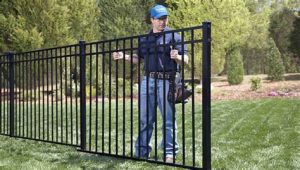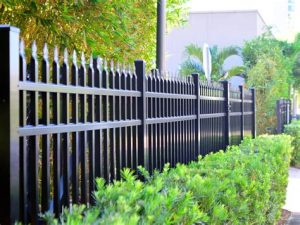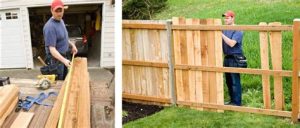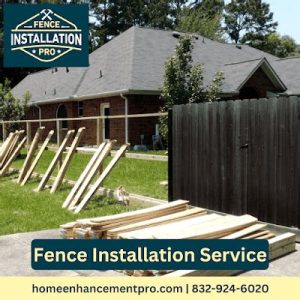Ensure your fence is in top condition by checking alignment, material quality, post secureness, gate functionality, and overall aesthetic appeal.When considering a new fence for your property, it’s essential not just to admire the final product but to ensure it meets all quality standards before showing your appreciation—especially when it comes to tipping your installers. A well-installed fence can greatly enhance your home’s security and curb appeal, but there are specific aspects to evaluate to guarantee it’s built to last. From examining the alignment of the fence to inspecting the quality of materials used, each detail plays a crucial role in the overall effectiveness of your fence. In this blog post, we’ll guide you through key tips to assess the installation quality of your fence, ensuring you can confidently reward the craftsmanship that protects your home and investments. Let’s dive into the essential aspects to consider before handing out that well-deserved tip!
Check the Fence Alignment
When it comes to ensuring the quality of your fence installation, one of the most critical aspects to evaluate is the alignment of the fence. A properly aligned fence not only enhances the overall appearance of your property but also contributes to its durability and effectiveness.
To check the alignment, begin by observing the line of the fence from a distance. Look for any noticeable dips or rises that may indicate misalignment. You can also use a level or string line to measure the reliability of the fence’s straightness. If you find any areas where the fence deviates from the ideal straight line, adjustments may be necessary.
It’s important to note that a well-aligned fence also supports the security it offers. Misaligned fences can create gaps that may allow unwanted access to your property. Regularly checking and maintaining the alignment of your fence will ensure that it serves its intended purpose effectively, while also preserving its aesthetic value.
Inspect the Material Quality
When it comes to fence installation, the material quality is paramount. A fence is an investment that should be durable and withstand various weather conditions. Therefore, inspecting the material used in your fence should be one of the first steps in evaluating the installation quality.
- Type of Material: Different materials offer varying levels of durability. For instance, vinyl is known for its longevity, while wood requires more maintenance.
- Grade of Material: Look for the grade or quality of the fencing material. Higher-grade materials usually offer better performance and longer-lasting value.
- Weather Resistance: Ensure that the materials have weather-resistant qualities. This is especially important if you live in areas with harsh climates.
Additionally, always check for any signs of defects or damages in the material used. This can be anything from warping in wood to rust on metal components. Replacing low-quality materials can save you from more significant issues down the line.
In summary, taking the time to inspect the material quality of a fence will lead to a more satisfactory investment. Remember, a sturdy fence not only adds to your property’s aesthetic but also provides security and durability.
Assess the Secureness of Posts
When evaluating the quality of a fence installation, one of the most critical aspects to consider is the secureness of the posts. The posts act as the backbone of your fence, providing necessary stability and support. If they are not installed securely, the entire structure may risk collapsing or leaning over time. Here are some tips to help you assess the condition of your fence posts.
1. Check for Movement: The first indicator of a problem is to check if the posts move when you push or pull on them. A properly installed post should not shift easily. If you notice any movement, it could mean that the post is either inadequately anchored or the soil surrounding it has settled.
2. Inspect the Depth: The depth of the posts is crucial for stability. Typically, fence posts should be buried at least one-third of their total length in the ground. You can measure by looking at the above-ground height and comparing it to the portion that is buried. If the posts appear too shallow, they may need to be redone to ensure a strong foundation.
3. Look for Signs of Wear and Tear: Over time, posts can degrade due to weather conditions or pests. Check for rot, rust, or insect damage. Wooden posts should be free from significant decay, while metal posts should not show signs of corrosion. If you find any issues, replacing or reinforcing those posts will enhance the overall durability of your fence.
| Signs of Post Issues | Recommended Actions |
|---|---|
| Movement when pushed | Reinforce or reset the post |
| Shallow depth | Reinstall the post to the correct depth |
| Signs of decay or rust | Replace or treat the post |
Remember, the secureness of the posts plays a vital role in your fence’s functionality and longevity. Taking time to properly assess and address any concerns can save you from costly repairs in the future.
Examine the Gate Functionality
When evaluating the quality of your fence installation, one crucial aspect to consider is the functionality of the gate. A gate is not just a mere entry point; it serves as a critical component of your property’s security and accessibility. Therefore, assessing how well it operates can save you from future headaches.
First, check how smoothly the gate opens and closes. It should operate without requiring excessive effort. If you notice any hanging, sticking, or grinding, this could indicate inadequate hinge installation or alignment issues. Regular lubrication of hinges can help to maintain smooth motion, so be sure to inspect that as well.
Next, evaluate the latching mechanism. The gate’s latch should securely engage when closed, providing a reassuring sense of safety. If your gate has a lock, test it multiple times to ensure it functions correctly. Additionally, pay attention to how the gate aligns with the fence when closed; any gaps could compromise security and allow unwelcome guests to enter.
Finally, don’t overlook any existing damage. Look for cracks, rust, or warping; these not only affect aesthetics but can also lead to structural issues over time. Ensuring that your gate functions not only enhances the safety and security of your property but also contributes significantly to the overall aesthetic appeal of your fence installation.
Review Overall Aesthetic Appeal
When evaluating the overall aesthetic appeal of your fence installation, it’s important to consider how well it complements your property. A well-chosen fence should enhance the landscape, providing both functionality and beauty. Start by assessing the design elements of the fence, such as its style, height, and color. Does it blend harmoniously with your home and garden? A visually appealing fence adds curb appeal and can increase the value of your property.
Next, focus on the material finishes used in the construction of the fence. Quality materials not only contribute to durability but also play a significant role in aesthetics. For instance, wooden fences can be treated with stains or paints that bring out the natural grain and texture, while metal fences often feature sleek designs that can modernize a space. Review the finish quality to ensure it aligns with your personal taste and the overall theme of your property.
Finally, consider how the fence interacts with surrounding elements, such as landscaping, walkways, and other structures. Does it create a cohesive look, or does it clash with existing features? Think about any decorative accents you might want to add, such as lighting or climbing plants, to enhance its appearance. Taking the time to meticulously assess these aspects will ensure that your fence not only serves its practical purpose but also enhances the overall visual appeal of your yard.
Frequently Asked Questions
What are the key factors to consider when evaluating fence installation quality?
Key factors include the quality of materials used, the level of workmanship, proper alignment and height, and adherence to local regulations.
How can I assess the materials used in my fence installation?
Inspect the materials for durability, such as wood’s resistance to rot, metal’s rust-proofing, or vinyl’s UV resistance. Ask for warranties or certifications.
What signs indicate a poorly executed fence installation?
Signs of poor installation may include misaligned panels, uneven heights, loose posts, or gaps between panels and the ground.
Why is it important to check for local regulations before installing a fence?
Local regulations often dictate height, materials, and placement to ensure safety and community standards. Failing to comply may result in fines or required removals.
What should I look for in the fence installation contractor?
Look for experience, positive reviews, proper licenses, insurance, and a detailed contract outlining the scope of work and materials.
How can I know if the fence installation is level?
Use a level tool to check if the fence is straight. You can also measure the height from the ground at various points to ensure consistency.
What questions should I ask before tipping the installation crew?
Ask about their installation process, warranty on work, how they address issues that arise, and any maintenance tips for the fence.




